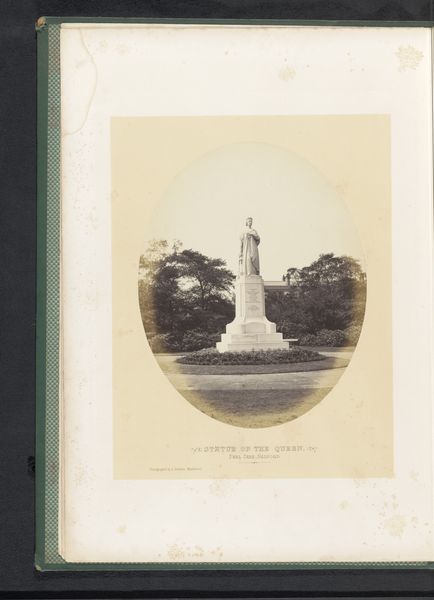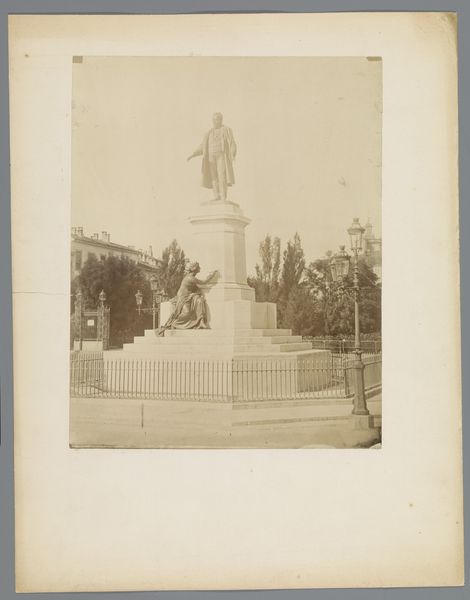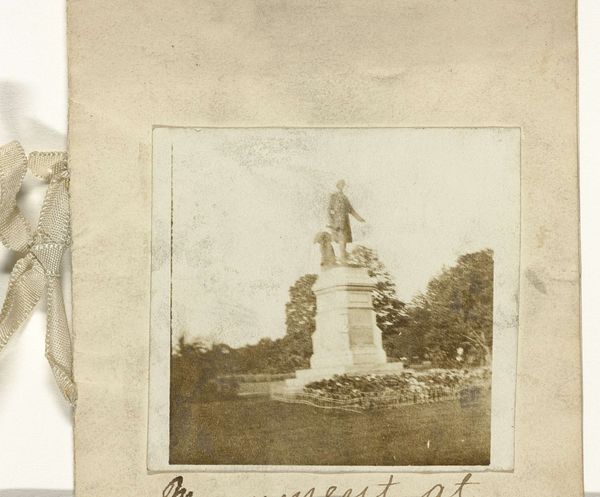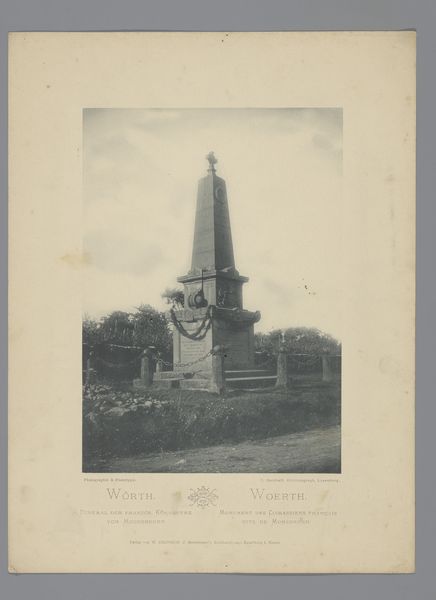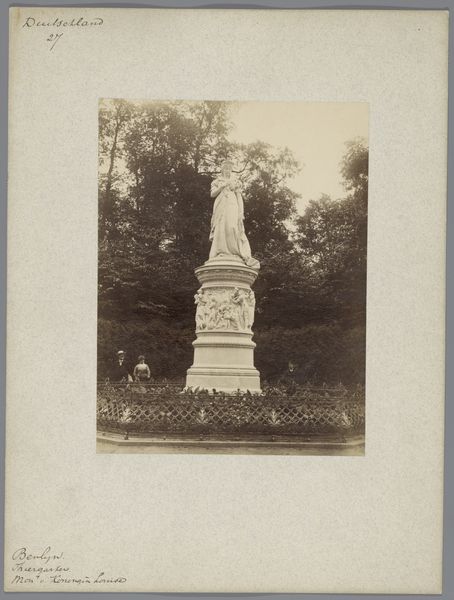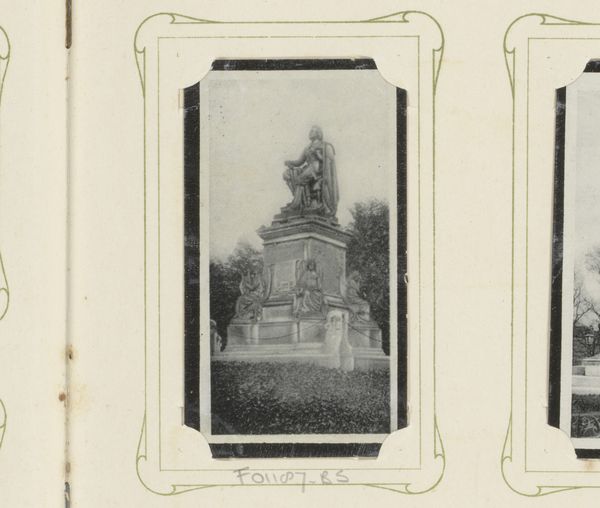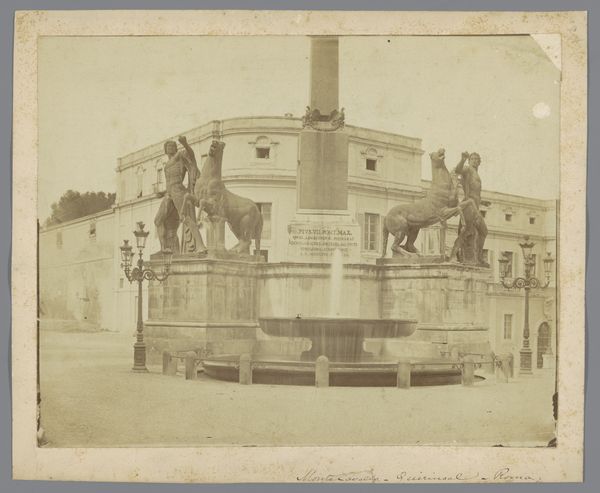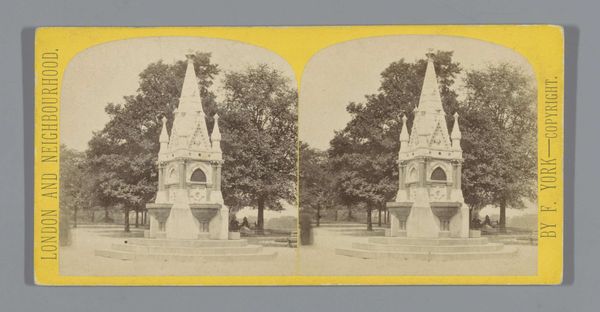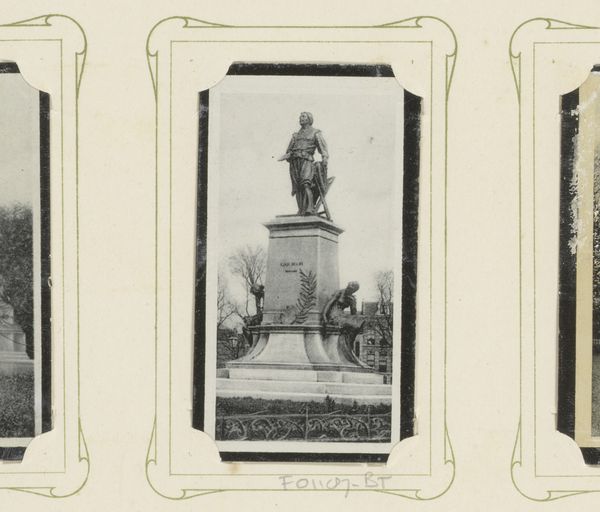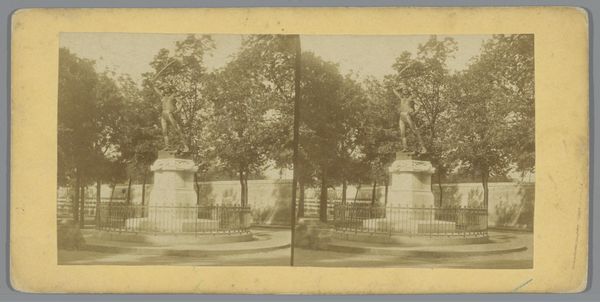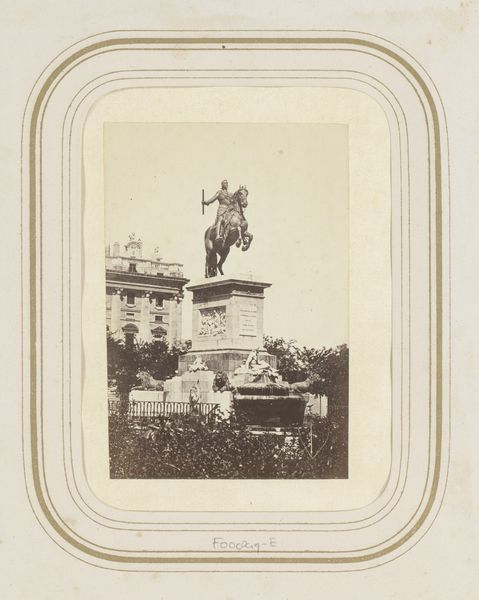
photography, albumen-print
#
portrait
#
photography
#
cityscape
#
albumen-print
Dimensions: height 85 mm, height 52 mm
Copyright: Rijks Museum: Open Domain
Curator: I’m struck by the imposing presence of that central obelisk. It’s rather stark against the backdrop. Editor: That's "Monument van Dalhousie te Singapore," a albumen print from between 1867 and 1880, credited to G.R. Lambert & Co. It now resides in the Rijksmuseum. It represents more than just architectural aesthetics, doesn't it? Curator: Absolutely. Dalhousie was the Governor-General of India, a key figure in British colonial expansion. The monument’s location in Singapore underscores the widespread reach of the British Empire and the assertion of power through monumental architecture. Editor: Notice the rigid symmetry, though. The steps leading up, the carefully positioned lamps, even the implied vanishing point above the obelisk, all guide the eye upward, reinforcing a sense of hierarchy. And it's contrasted against the lush nature beside it. It’s as if order is imposed onto chaos. Curator: Precisely. It's a constructed landscape, isn’t it? Consider how this photograph might have functioned. Albumen prints were widely circulated, becoming visual tools for shaping perceptions of colonial power. The neat presentation of the monument promotes a vision of orderly governance and progress. Editor: And what to make of the photographic process itself? The sharpness, the tones of the albumen print render a particular kind of objectivity…yet, that very objectivity is, of course, constructed. The photographers chose a specific perspective, excluding elements that might disrupt the intended message. Curator: Right. Think of who commissioned this photograph, who consumed it, and what ideologies it reinforced. This image actively participated in the socio-political landscape of the time. It helped legitimize British control by visually representing their influence and values. Editor: So, it’s an artifact deeply embedded within a complex web of colonial history and visual strategies. Curator: Exactly. More than just a document, it’s a carefully crafted image meant to assert and normalize a certain order of things. Editor: Looking at it with fresh eyes, beyond the strict composition, one wonders whose perspectives were intentionally left out of this calculated portrayal. Curator: Indeed, a testament to how images actively create and shape our understanding of history.
Comments
No comments
Be the first to comment and join the conversation on the ultimate creative platform.

